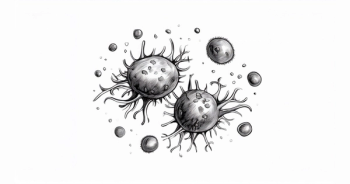
Sequencing of Antibodies to Treat Daratumumab Resistance
Paul G. Richardson, MD:We’re left then with a very exciting opportunity for thinking more creatively around how to target CD38 in relapse. Obviously, daratumumab rechallenges daratumumab frequency, and all of these important moves can be very helpful to patients. So for someone who’s on daratumumab maintenance, you can simply increase the frequency of daratumumab therapy. You can add drugs to it rationally and see restoration of response. The area of daratumumab resistance, though, is particularly complicated.
For example, at the ASH [American Society of Hematology] meeting, we presented data from the isatuximab studies looking at whether CD38 levels correlate with outcome. Interestingly, the data from both phase III and phase II studies did not support that. Therefore, as you think about CD38 expression or circulating levels of CD38, obviously those are going to be low after daratumumab exposure. That raises the very important question of, what kind of antibody do you then deploy?
As you think about sequencing of antibodies, these are all important considerations to think about. Obviously, we reach for BCMA [B-cell maturation antigen]-targeting strategies after targeting CD38 has failed a patient. That’s an important new avenue, and there was a tremendous amount of data at the ASH meeting to support thatwith antibody drug conjugates, and also the cellular platforms, and so-called BiTEs [bispecific T-cell engagers].
However, I think in community practice, it’s important to recognize that these approaches remain experimental and are areas of research. Access to them may not be that easy. So with all of that in mind, when we have the advent of a CD38-targeting antibody that’s qualitatively different in its properties to daratumumab, I think that’s a very important contribution and provides us with the opportunity to think very creatively about combination strategies. So as you think about, for example, diffuse large B-cell lymphoma, and you use Rituxan [rituximab]/CHOP [cyclophosphamide, doxorubicin, vincristine, and prednisone], Rituxan [rituximab]/ICE [ifosfamide, carboplatin, and etoposide], Rituxan [rituximab]/EPOCH [etoposide, prednisone, vincristine, cyclophosphamide, and doxorubicin] in sequence, it may well be that in myeloma, which in my opinion, is a much more complicated disease, you may be thinking of a different CD38 approach. In other words, you may be deploying daratumumab up front, using daratumumab in maintenance, but then you may be rationally thinking about, “I target CD38, but I might want to think about a different CD38 antibody to optimize outcome.”
Transcript edited for clarity.








































